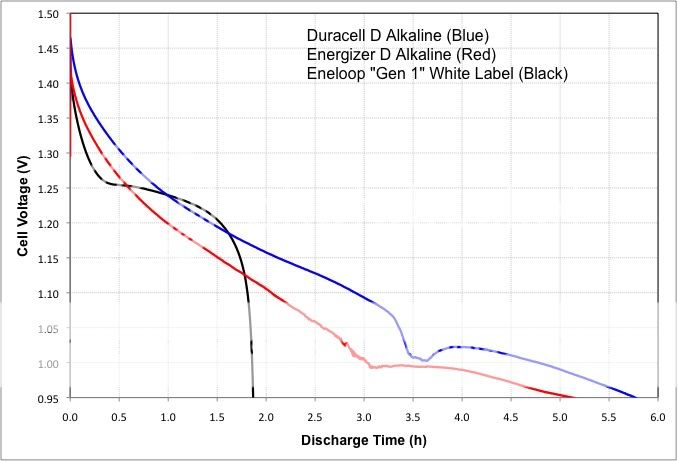qwertyydude
Flashlight Enthusiast
- Joined
- Aug 10, 2008
- Messages
- 1,115
Your multimeter has more resistance than a true dead short. We test cells at 10 milliohm resistance when measuring flash amps. I have stacks of data showing D cells putting out 20 to 25 flash amps, while AA cells typically fall between 8 and 12 amps into the same load.
Even if it did have more resistance than a dead short, that still doesn't explain why the AA would basically outperform the D battery in an equal resistance test. Same multimeter, essentially the same state of charge, the .007v difference shouldn't lower the D cell current by 3 amps if the D-cell truly had lower internal resistance. And I do use very low resistance short length 16 gauge wires on my multimeter, it's about as close to a dead short as you're really going to get and considering the high resistance of the batteries it's a gives a good representation of the discharge capability of alkalines. Nimh not at all because AA can go up to 20 amps, D-cell forget it, it can smoke 16 gauge wire on a dead short. I know my high performance 5300 mah sub-c RC cells can put out 75 amps peak on a dead short.
Last edited:


